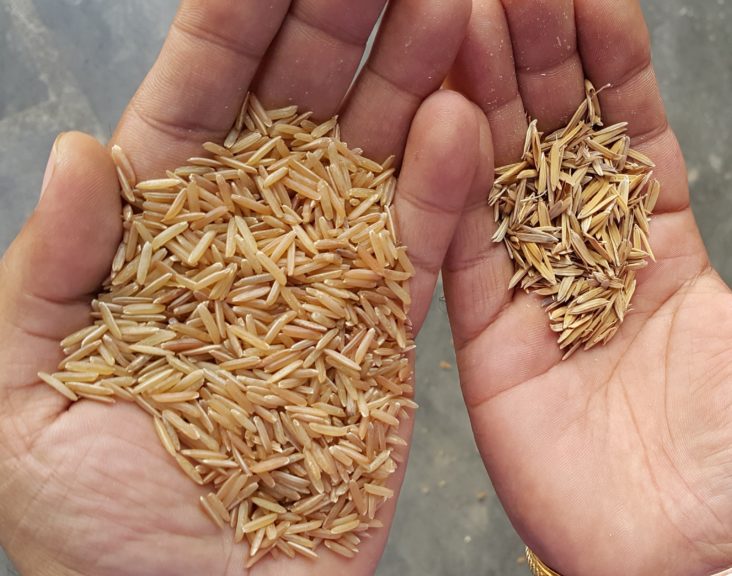Making of Authentic Indian Basmati Rice

The mouth-watering taste of basmati rice is enjoyed by enormous number of people around the world. But the making of basmati is not that easy. Let us explore the process of making the authentic basmati rice.
Type of Soil
Basmati rice is a crop that is grown in medium to fine textured soil with a very good water holding capacity, for extracting a relatively high yield as well as the best desired quality.
Climatic Conditions
Famous basmati rice is basically a very sensitive plant, which requires a high humidity, a good amount of water supply as well as an elongated period of sunlight. These climatic conditions are present in certain geographical areas, including the much-known Indo-Gangetic Plains. This region includes Punjab as one of the main hub to produce basmati rice.
Preparing the Basmati Bed
The field where the production of basmati rice is to be done is dry ploughed and then inundated with 5 to 10 cms of standing water 3 weeks before the planting. Then, the leveling of the field is done by adding up organic manures and green manures. 3 days before the plantation process, the field is submerged with water.
Actual Planting and Irrigation
3 weeks old seedlings are implanted from the nursery to the fields. There is a general spacing in the rice plantation of 30cm X 25cm. The planting is done in a rectangular grid in a puddle condition. For a good basmati field, tilling of the soil should be done very critically. Also, a proper uptake of nitrogen, uniform leveling of the land for proper drainage and effective management of water plays a very significant role in the production of healthy basmati rice.
Harvesting time
The small seedling of basmati rice plant undergoes the process of production and matures into a plant. It takes 3 months for a basmati rice plant to ripen and thus, the harvest is ready. Harvesting can be done using machines as well as manually depending upon the size of the field.
Drying up the Basmati
When the basmati rice is harvested, it is full of moisture content which must be parched to undertake further processes. Drying up can be done naturally under the presence of sunlight, or artificially by heated air.
Milling and Hulling
Milling includes two stages – hulling and polishing of the basmati. A process of removing the bran layer of rice by rolling on the grains with the machine is known as hulling. The layer on the rice is removed very efficiently. After hulling is done, basmati rice is made to look more presentable to sell and thus polished to get refined grains.
Enriching the basmati rice
Replenishment of basmati rice is done to inculcate all the nutrients and vitamins to it which have been polished in the above processes.
Thus, the pure consumable rice grains are obtained which is served to plenty of people around the globe.


????????
Like!! Really appreciate you sharing this blog post.Really thank you! Keep writing.